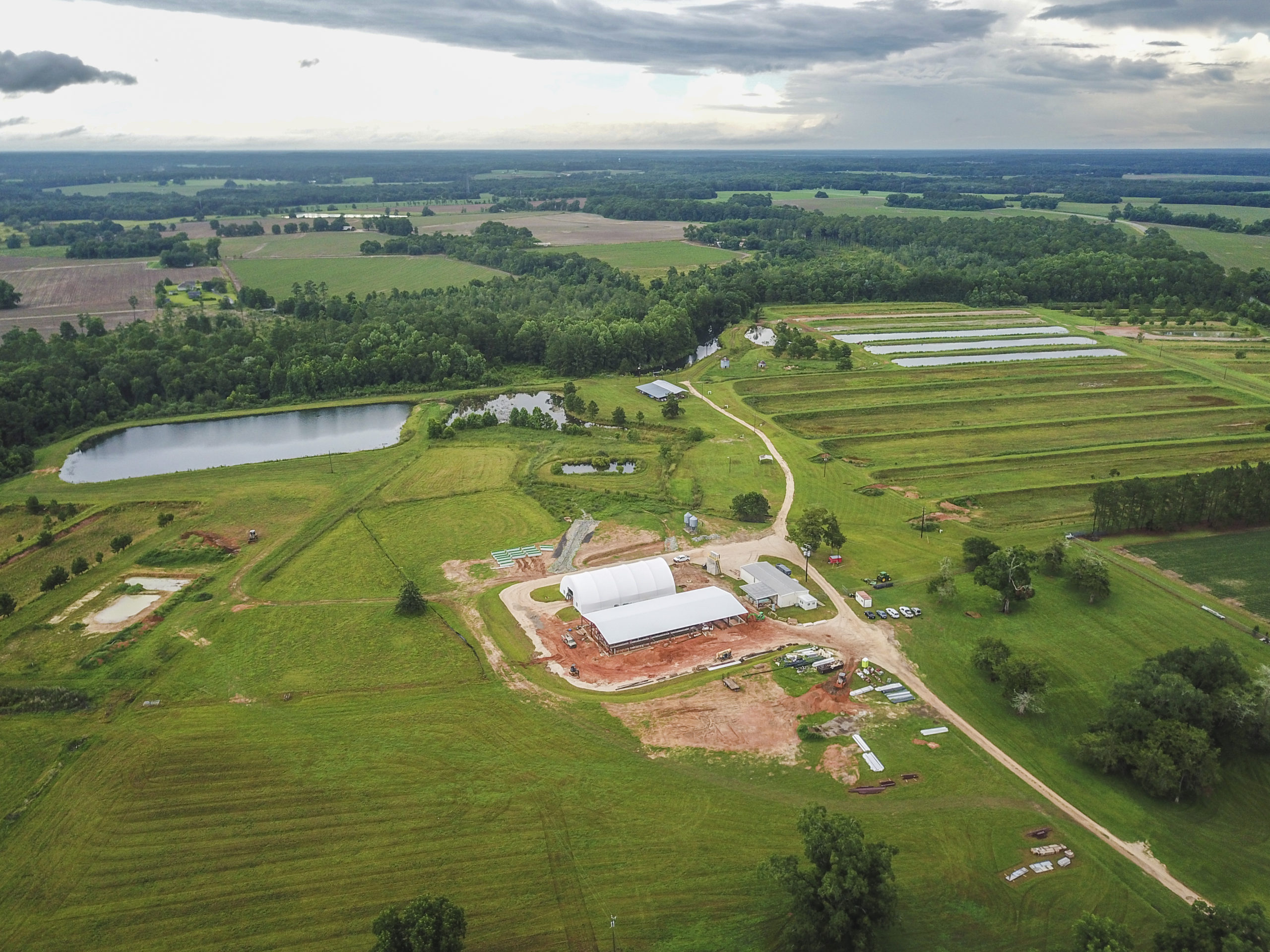When a legacy client reached out to tell us about their new and intriguing project in Georgia, we couldn’t wait to get started. Though we are based in South Florida, projects like this don’t come along often, so it was a no-brainer for us to get involved. You may call it a “unique” opportunity to build a Fish-culture Facility, but at Woolems, we saw it as a way to get inspired and succeed in new territory, project-wise and location-wise.
Our team consisted of Project Manager, Shawn Rich; Superintendent, John Higgins; Assistant Project Manager, Tina Nguyen; Project Accountant, Betsy Donahue; and Labor Foreman, Brian Williams. We sent John to live in Southwest Georgia temporarily so that we would always have a Woolems team member nearby. He said this about his time living there:
“60% of the work was all underground and working with different subs than we typically work with was exciting. Georgia was very enjoyable and so was the project, but I did have to get used to the Country life.”
The rest of the crew took trips to assist and to attend meetings with the client and project team. This team was handpicked to work on this project due to their variety of project skills. For example, Shawn worked at a custom aquarium company for many years, designing, building and maintaining large aquatic exhibits for both public and private facilities, so his familiarity with aquatic filtration systems made for productive interactions and synergies with the project’s operations team.

A little more about this interesting opportunity, Fish-culture is the farming of fish for uses such as luxury and sport fishing, and cooking. In rural Southern Georgia, we built two main structures: a production facility and a research facility. The research facility is an 8000 sq. ft. structural steel building, in which genetic testing will be done to yield a superior fish for sport fishing. There is large custom filtration equipment that pumps water from naturally occurring underground water wells throughout the property. There is UV sterilization, mechanical and biological filtration systems, water chillers and lighting control that will all assist in breeding different species. Since species of fish breed during certain times of the year, these systems work together to simulate that season as well as different times of the day for breeding research.
After hatching, the fish are transferred to one of the many 1000 ft long by 150 ft wide ponds that hold 3-4 million gallons of water each. They will grow there and then the concrete kettles that we built will collect the fish and they will be transferred into the 5000 sq. ft. production building, where they will continue to grow, and be fed until ready for distribution. Another fascinating aspect is that these fish are micro-chipped. This allows sports fisherman to scan the chips and continue to record the size of the fish after they have left the facility. Fish-culture facilities like these will help restock freshwater lakes across the country.

This entire project was thrilling for our team, even the ones who had never gone to Georgia, because it showed us what we are capable of. Getting to be a part of important research and learning so many new things made this job unforgettable and we are grateful to have had a hand in bringing the project to life. Check out this list of short fun facts for the Georgia Fish-culture Project:
- Laid over 15,000 sq. ft. of sod.
- Each raceway has 4,985 feet of #5 rebar installed, total four raceways.
- Installed over 950 yards of #57 gravel.
- Over 500 yards of concrete poured during phase 1 and 2.
- September’s average temperature was 89 degrees, hottest September since 1925.
- Installed 42 fiberglass tanks within both buildings.
- Had 41 fish spawns during the late spring spawning.
- Southwest Georgia had 22 inches of rainfall in December 2018, most rainfall in 100 years.
